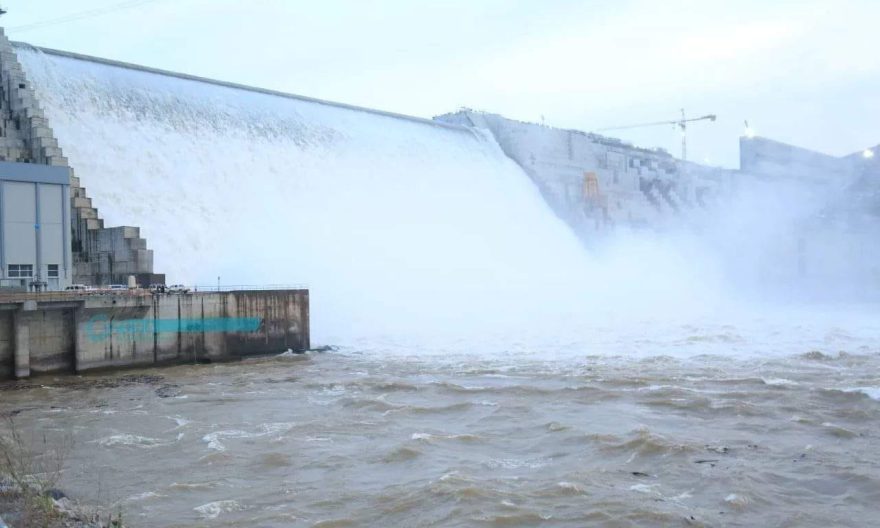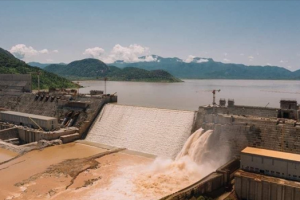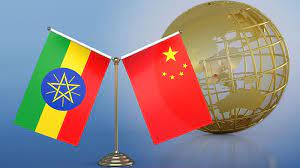
Ethiopia’s recent economic and political developments have attracted the attention of countries around the world. The country has surged in economic, political, and international activities over the past year, and the Ethiopian Year 2015 marked a pivotal point in the country’s growth trajectory. The year witnessed significant milestones, including Ethiopia’s admission into the BRICS bloc and the announcement of the 4th filling of the Grand Ethiopian Renaissance Dam (GERD).
The Ethiopian government has implemented a series of economic reforms that have contributed to the country’s impressive economic growth in recent years. The government has prioritized the development of key sectors such as agriculture, manufacturing, and infrastructure, which has been crucial to the country’s rapid development.
Ethiopia’s membership in the BRICS bloc has opened up new opportunities for trade and investment, which is expected to further boost economic growth. In addition to economic reforms, Ethiopia has also been making significant strides in political development.
Ethiopia’s acceptance into the BRICS bloc is indicative of the country’s growing economic prowess and potential to become a regional economic giant. This recognition puts Ethiopia in the same category as other emerging economic powers like Brazil, Russia, India, China, and South Africa. The admission of Ethiopia into this grouping is a significant step towards economic cooperation and collaboration with these countries leading to opportunities for mutual growth and development.
The 4th filling of the GERD is a crucial step towards this goal and signifies Ethiopia’s commitment to meeting its energy needs and those of neighboring countries. The GERD has been a source of controversy between Ethiopia and Egypt. The issue has also garnered international attention, with different countries and organizations weighing in on the matter.
The GERD is not only a symbol of Ethiopia’s aspirations for energy security and economic growth but also of its determination to assert its sovereignty and pursue its national interests. As a result, Ethiopia’s position on the issue has been firm, and the country has expressed a willingness to defend its right to pursue its development goals.
Ethiopia has been experiencing a rapid ramp-up of economic, political, and international movements, particularly in the just ended Ethiopian Year 2015. Major events such as Ethiopia’s acceptance into the BRICS bloc and the announcement of the fourth filling of the GERD have garnered significant attention. However, some unresolved issues have emerged following the Ethiopian government’s announcement of the 4th round filling of GERD leading to accusations from the Egyptian government.
The construction of the $4 billion GERD project commenced in 2011, and Ethiopia considers it crucial for its economic development. The dam will not only provide electricity to power the country’s growth but also enable increased electricity coverage and exports to neighboring nations. Additionally, the dam will facilitate flood protection, irrigation, sediment control, and navigation.
Once completed, the GERD will be the largest dam in Africa, spanning 1,800 meters in length, 155 meters in height with a total volume of 10.4 million cubic meters. Its reservoir will cover 1,875 square kilometers and hold 74 billion cubic meters of water. However, the construction of the dam has been a subject of debate between Ethiopia and downstream countries.
Engineer Kifle Horo, the Project Manager of the dam, stated that Ethiopia began construction in the Guba Valley 12 years ago, and the overall progress has reached 93%. Civil work is nearly 98% complete, and the construction of the Saddle Dam has been finished.
The completion of the Saddle Dam has raised the dam’s height to approximately 645 meters, increased its power generation capacity to 5,150 MW, and expanded its water storage capacity to 74 billion cubic meters, according to Engineer Kifle.
Engineer Kifle Horo added that five additional turbines are currently being constructed and will begin generating power in the 2023/24 period.
Regarding the recent announcement of the fourth and final filling of the reservoir, it is crucial to clarify that “final” does not signify that the dam will never be filled again. Dr. Eng. Habtamu Itefa, the Minister of Water and Energy, explained on local media that the term “final” is used because the four rounds of filling require a substantial amount of water. The dam has successfully retained the intended amount of water in these four rounds. So, after this without filling high level of water the construction will continue .
Engineer Gideon Asfaw, an Ethiopian GERD negotiator, clarified that the accusations made by Egypt are incorrect. He emphasized that the filling was carried out in accordance with the agreed-upon principles, and there has been no violation of the agreement.
Throughout the project’s development, Egypt has consistently attempted to impede its progress by making colonial assertions and spreading false information about the dam on various international platforms. Also , Egypt refers to the agreements reached during the colonial period. But Ethiopia has repeatedly stated that these agreements made during the period of colonial rule are not accepted and that the construction of the dam will not bring any particular problems to Egypt. Rather, it helps protect downstream countries from being attacked by floods every summer.
One of the most significant colonial agreements regarding the Nile was the 1902 Anglo-Ethiopian Treaty. The treaty granted Britain control over the territories around the upper Nile, while Ethiopia was given control over the lands around the Blue Nile. The treaty did not, however, recognize Ethiopia’s rights to the waters of the Nile, leading to tensions between Ethiopia and Britain that persisted for decades.
In 1929, a new agreement was signed between Britain and Egypt, known as the Nile Waters Agreement. This agreement gave Egypt and Sudan the exclusive right to use the waters of the Nile, despite the fact that the river also flowed through other countries. The agreement was based on the colonial-era assumption that Egypt and Sudan were the sole beneficiaries of the Nile, while the other countries that shared the river had no valid claim to its waters.
However, the 1929 agreement remained in force until 1959, when Sudan, Egypt, and Britain signed another agreement known as the Agreement for the Full Utilization of the Nile Waters. This new agreement recognized the rights of upstream countries, such as Ethiopia and Uganda, to build dams and other infrastructure on the Nile for their own economic development.
Sudan put pressure on Egypt to revise the 1929 agreement after gaining its independence in 1956 in order to better protect its interests. As a result, in 1959, Egypt and Sudan reached an agreement. The agreement completely excluded other riparian nations by assigning 55.5 and 18.5 bcm to Egypt and Sudan, respectively, and leaving 10 bcm for evaporation and other reasons out of the average annual Nile flow, which is agreed to be 84 bcm. Ethiopia, the largest provider of the overall amount of Nile water (86%), was not included in the negotiations and was not given any portion of the water, let alone other riparian nations.
In spite of this, as Ethiopia forges ahead with its ambitious agenda, it remains committed to harnessing its potential for the benefit of its people and the region. The completion of the GERD and its acceptance into BRICS represent significant milestones in Ethiopia’s journey towards sustainable development. Despite the challenges and controversies that have arisen, Ethiopia’s resolve to overcome these obstacles and emerge as a global player remains unwavering. With careful diplomacy, strategic partnerships, and a clear vision for the future, Ethiopia is poised to make a lasting impact on the world stage.
Despite the numerous obstacles that Ethiopia has faced in its endeavor to forge ahead with its ambitious agenda, it remains steadfast in its commitment to exploit its potential for the benefit of its people and the region. Ethiopia’s determination to complete GERD and its acceptance into the BRICS demonstrate significant milestones in the country’s quest for sustainable development.
BY EYUEL KIFLU
THE ETHIOPIAN HERALD WEDNESDAY 20 SEPTEMBER 2023





